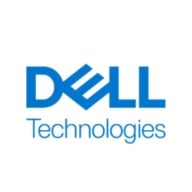

Dell PowerFlex and Hitachi Unified Compute Platform HC Series are competitive solutions in the hyper-converged infrastructure market. Dell PowerFlex seems to have the upper hand with its scalability and flexibility, appealing to enterprises needing adaptable storage solutions, while Hitachi is preferred for its system resilience and performance, beneficial for reliability-focused buyers.
Features: Dell PowerFlex offers integrated data protection, automation, and multi-cloud deployment capabilities. Its architecture allows for easy scaling. Hitachi Unified Compute Platform HC Series features strong security protocols, real-time analytics, and compatibility with existing systems.
Ease of Deployment and Customer Service: Dell PowerFlex's deployment model is streamlined with automation tools, simplifying integration. Its customer service is responsive and aids in setup. Hitachi benefits from detailed guides and a structured rollout approach, with customer support ensuring smooth transitions.
Pricing and ROI: Dell PowerFlex involves an upfront cost aligned with its feature set, promising high ROI through operational efficiencies. Hitachi may require a higher initial investment, but its performance reliability contributes to notable ROI over time.
| Product | Market Share (%) |
|---|---|
| Dell PowerFlex | 9.3% |
| Hitachi Unified Compute Platform HC Series | 0.6% |
| Other | 90.1% |

| Company Size | Count |
|---|---|
| Small Business | 8 |
| Midsize Enterprise | 8 |
| Large Enterprise | 15 |
Dell PowerFlex is a software-defined storage infrastructure delivering modern architecture and versatile deployment for on-premises or cloud. It achieves high performance, scalable storage, and workload consolidation through advanced automation.
PowerFlex's VMware compatibility ensures seamless integration, offering flexibility in compute and storage scaling. With its hyper-converged infrastructure, it caters to AI, cloud, and database environments, providing robust automation, resilience, and security. Flexible deployment options are complemented by a single-window management system, prioritizing cost optimization. However, enhancements are needed in monitoring tools, user interface, and AI functionality. Migration from Hyper-V and licensing flexibility also require attention, while improved documentation could simplify usage. Integration with services and streamlined upgrade processes are essential.
What are the key features of Dell PowerFlex?PowerFlex is essential in industries requiring support for mission-critical workloads and large-scale applications. It is instrumental for deploying storage, compute nodes, hyper-converged infrastructure, and private clouds. The platform integrates compute, storage, and networking, optimizing performance for modern applications like AI video analytics and disaster recovery.
Hitachi Unified Compute Platform (UCP) is the company's product for converged infrastructure (CI), combining resources server, storage, networking, virtualization, and software management.
We monitor all HCI reviews to prevent fraudulent reviews and keep review quality high. We do not post reviews by company employees or direct competitors. We validate each review for authenticity via cross-reference with LinkedIn, and personal follow-up with the reviewer when necessary.